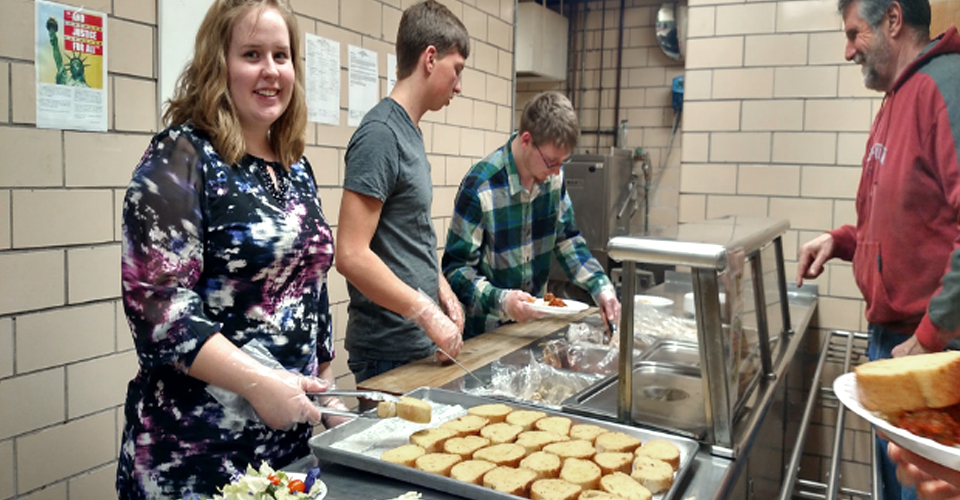With the closest grocery store 20 miles away in Ravenna or Streetsboro, residents of the small town of Mantua have few options to get fresh produce. High school students in a Northeast Ohio Medical University-based program had an idea of how to help. Now, their Health Professions Affinity Community (HPAC) group has received a grant of nearly $100,000 from the State Farm Youth Advisory Board to build a program around an aquaponics greenhouse.
When students join one of about 100 NEOMED-generated HPACs that now proliferate in Ohio and across the country, they not only identify a community need or problem; they learn to seek grant funding and develop community programs to help solve the problem—in this case, the food desert in Mantua.
The Crestwood High School HPAC will use its newly awarded grant of $99,976 from State Farm to create an aquaponics greenhouse and a greenhouse annex that will used as a storage facility and marketplace. The grant will also fund renovations to a local nature trail called Red Devil’s Run.
So what exactly is an aquaponics greenhouse? It takes water that is nutrient-rich from fish waste and recycles it to help grow plants—which in return, feed the fish. “The creation of the greenhouse will serve two purposes: to provide the community fresh produce such as fruits, vegetables and fish and provide a hands-on learning environment for the students while benefiting the community,” said Anita Iveljic, associate director of AmeriCorps and founder of the Crestwood High School HPAC.
HPAC is embedded in a class offered at Crestwood High School that focuses on service learning. Students learn about social issues such as the shift away from farming in a community where it has been a way of life. The students identified poverty and obesity as community concerns in Mantua. In Portage County, the obesity rate is 24.5 percent, and 36 percent of the population is found to be overweight. Poverty and obesity go hand in hand when, as in Mantua, the food that’s readily available is unhealthy and low-quality.
Through the aquaponics greenhouse project, students learned how to fundraise through projects such as a color run in Hiram, spaghetti dinners and going door-to-door to ask for donations. With Iveljic’s oversight, the students wrote the entire grant. This included providing the background research for the grant, such as the equipment needed for the greenhouse; the building plans, including the climate control needs; and plans for building the annex and renovating the trail.
Once the greenhouse is built, the students plan to create a salad bar in the cafeteria and a fresh produce pantry where students can select food to take home. Market days will be held to allow the community to buy food at a low cost. The next step for sustainability will be to partner with a local college, such as Hiram College, to provide a business component that teaches students how to market and sell produce.
Just as HPAC helps students discover their health care career paths, leading the Crestwood students helped Anita Iveljic discover her own. A one-year AmeriCorps assignment turned into two as Iveljic helped establish HPAC at Crestwood, working tirelessly alongside the students to help make their vision possible. Her role in helping with the greenhouse turned into an opportunity for a full-time position, and she now serves as the associate director of AmeriCorps at NEOMED.
“What is most unique about our project is that is entirely student-run,” said Iveljic. “We know that we are taking on a big task, but the students are a dedicated group and feel the outcome will be worth all of the effort put into it.”
